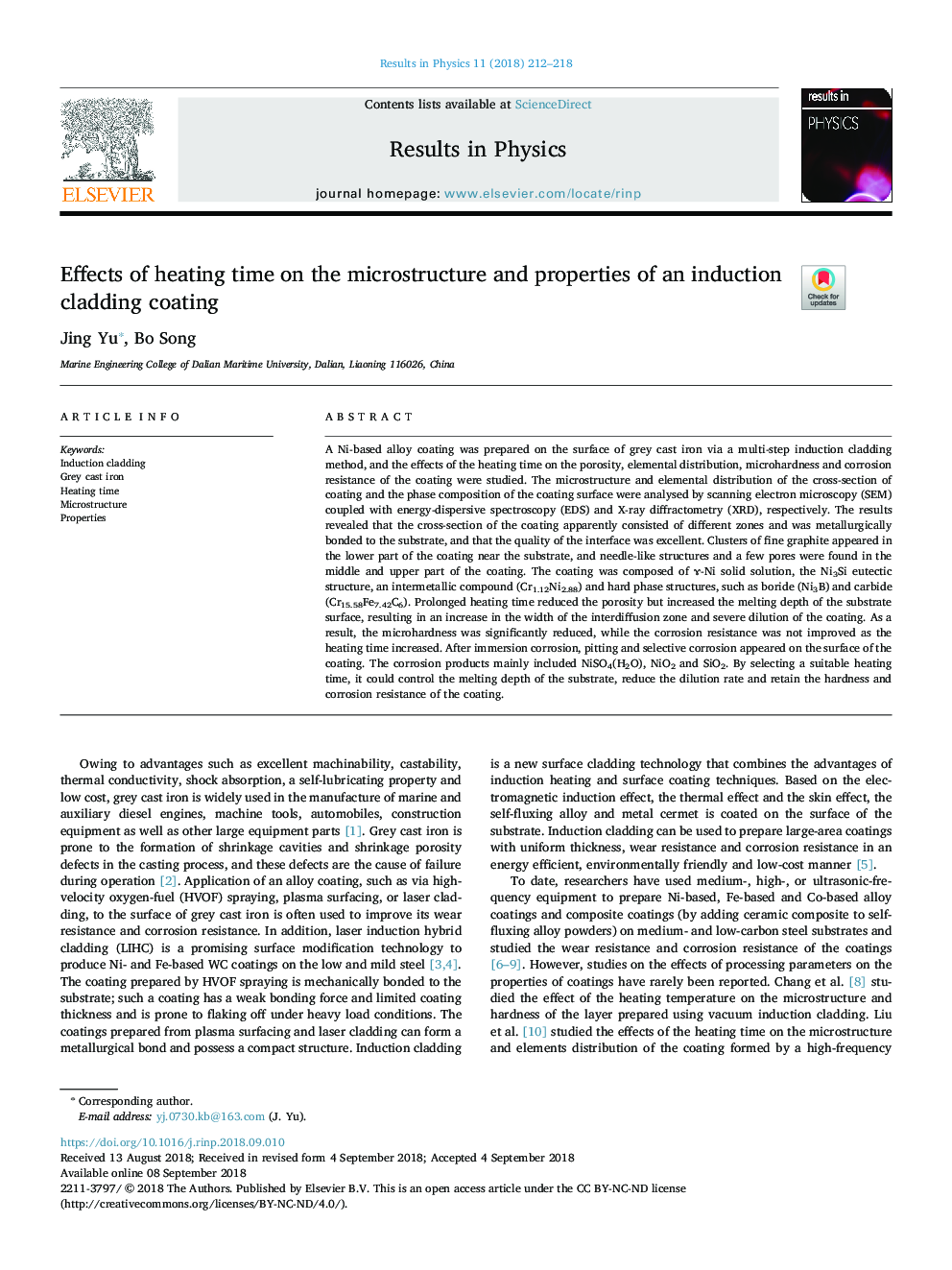| کد مقاله | کد نشریه | سال انتشار | مقاله انگلیسی | نسخه تمام متن |
|---|---|---|---|---|
| 10136927 | 1645695 | 2018 | 7 صفحه PDF | دانلود رایگان |
عنوان انگلیسی مقاله ISI
Effects of heating time on the microstructure and properties of an induction cladding coating
ترجمه فارسی عنوان
تأثیر زمان گرمایش بر ریزساختار و خواص پوشش روکش آلومینیومی
دانلود مقاله + سفارش ترجمه
دانلود مقاله ISI انگلیسی
رایگان برای ایرانیان
کلمات کلیدی
روکش فلزی القایی، چدن خاکستری، زمان گرمایش، ریز ساختار، خواص،
موضوعات مرتبط
مهندسی و علوم پایه
فیزیک و نجوم
فیزیک و نجوم (عمومی)
چکیده انگلیسی
A Ni-based alloy coating was prepared on the surface of grey cast iron via a multi-step induction cladding method, and the effects of the heating time on the porosity, elemental distribution, microhardness and corrosion resistance of the coating were studied. The microstructure and elemental distribution of the cross-section of coating and the phase composition of the coating surface were analysed by scanning electron microscopy (SEM) coupled with energy-dispersive spectroscopy (EDS) and X-ray diffractometry (XRD), respectively. The results revealed that the cross-section of the coating apparently consisted of different zones and was metallurgically bonded to the substrate, and that the quality of the interface was excellent. Clusters of fine graphite appeared in the lower part of the coating near the substrate, and needle-like structures and a few pores were found in the middle and upper part of the coating. The coating was composed of ɤ-Ni solid solution, the Ni3Si eutectic structure, an intermetallic compound (Cr1.12Ni2.88) and hard phase structures, such as boride (Ni3B) and carbide (Cr15.58Fe7.42C6). Prolonged heating time reduced the porosity but increased the melting depth of the substrate surface, resulting in an increase in the width of the interdiffusion zone and severe dilution of the coating. As a result, the microhardness was significantly reduced, while the corrosion resistance was not improved as the heating time increased. After immersion corrosion, pitting and selective corrosion appeared on the surface of the coating. The corrosion products mainly included NiSO4(H2O), NiO2 and SiO2. By selecting a suitable heating time, it could control the melting depth of the substrate, reduce the dilution rate and retain the hardness and corrosion resistance of the coating.
ناشر
Database: Elsevier - ScienceDirect (ساینس دایرکت)
Journal: Results in Physics - Volume 11, December 2018, Pages 212-218
Journal: Results in Physics - Volume 11, December 2018, Pages 212-218
نویسندگان
Jing Yu, Bo Song,
